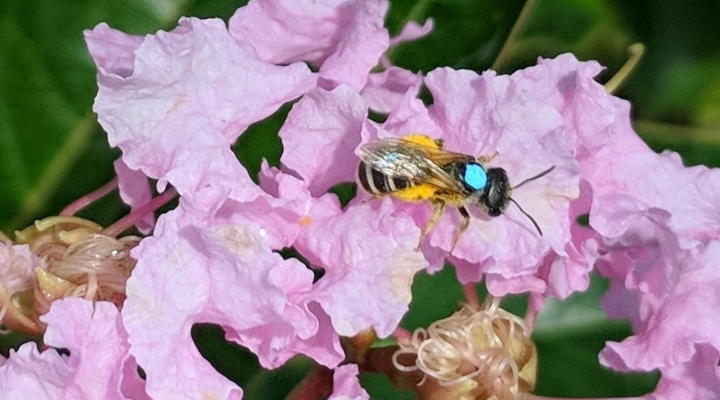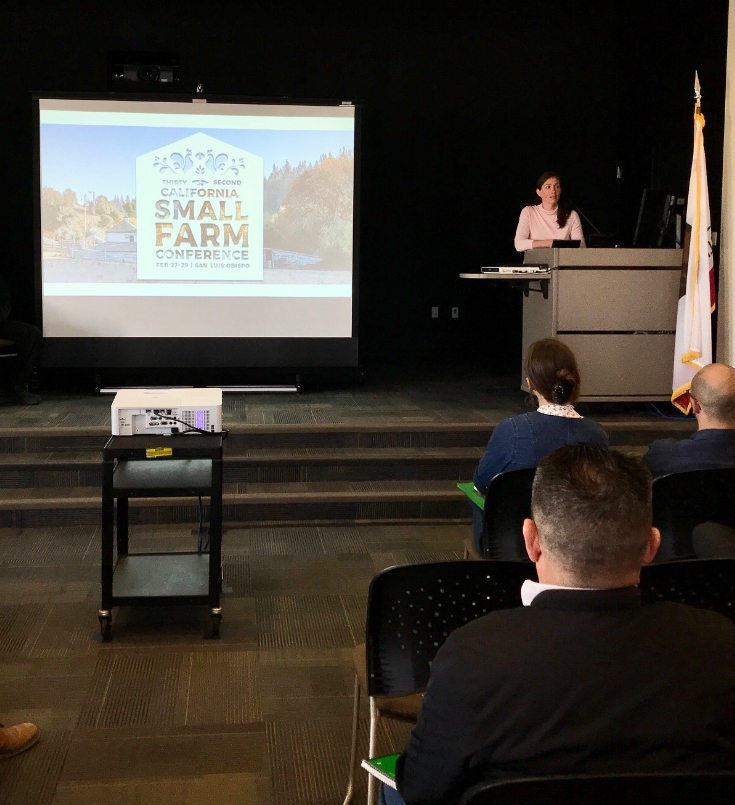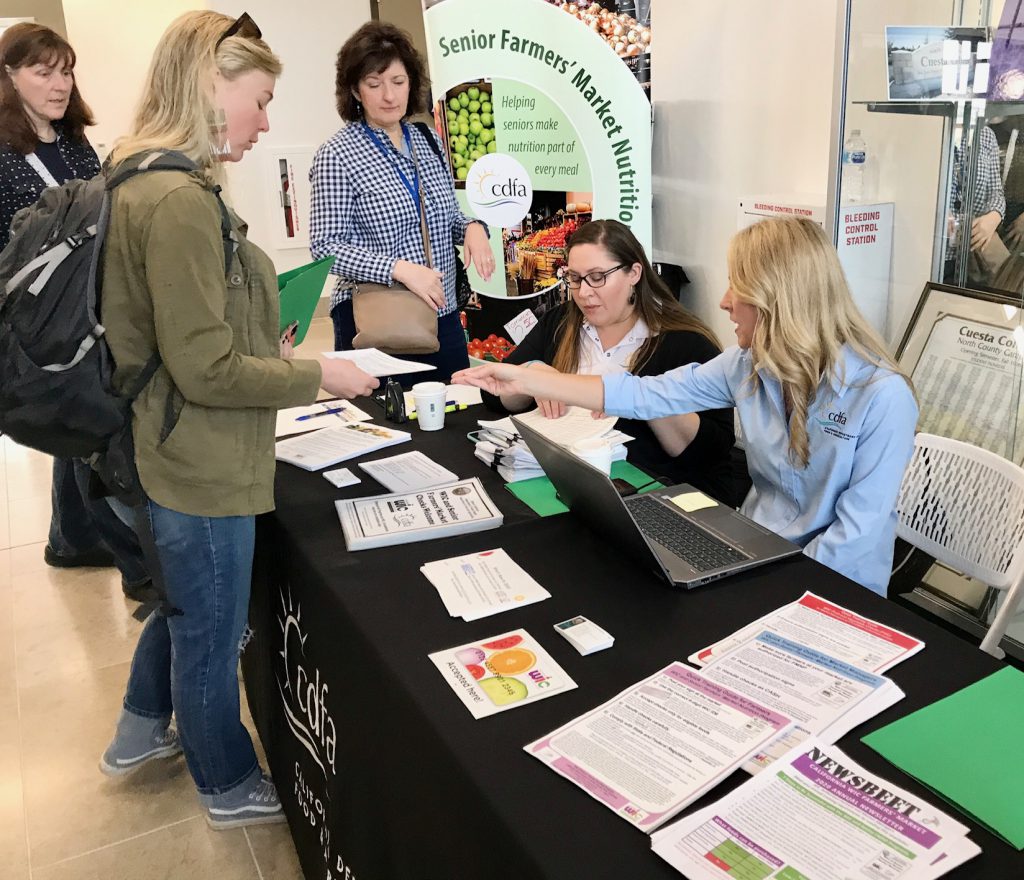By Jessica Fu
Every summer, wine scientist Andrew Walker embarks on one or two road trips in search of wild grapes. Armed with an eagle eye, a team of graduate students, and a rental car—the wheels on one side rolling along the asphalt and the wheels on the other rumbling through the adjacent gravel—Walker estimates that he drives between 400 and 500 miles per day in search of native grape varieties, which conveniently thrive along the edges of roads. When he comes across a wild grape, he uproots the plant, places it in a Ziploc bag, and stores it on ice. For obvious reasons, uprooted plants don’t last long, so these foraging trips never last more than a few days. Walker then brings the wild varieties back to his lab at the University of California, Davis, where he’s a professor of viticulture and enology (fancy terms for “wine-growing” and “the study of wine,” respectively). The plants will go on to play an integral role in his research, breeding grapes to withstand one of today’s most challenging environmental issues: salty soil.
The gradual, upward creep of soil salinity is a quiet phenomenon—one that doesn’t get as much attention as, say, historic levels of flooding or incurable plant diseases. The factors that drive salinization, as it is officially known, are manifold. The use of certain high-salt fertilizers can increase salinity; as can saltwater intrusion—a problem that occurs in coastal regions where seawater from the ocean seeps into groundwater reserves. Even everyday, non-agricultural practices, such as the use of road salt, can play a role. But perhaps the most significant contributor to salinization is something that appears far less menacing: Irrigation, the ubiquitous, millennia-old technique of human-controlled watering.
Farms supported by irrigation, located mostly in the West, make up half the market value of the country’s annual agricultural output, according to a 2016 Congressional Research Service report. Irrigation has given producers the power to extract freshwater nearly everywhere—from distant rivers to aquifers deep under the earth’s crust—and bring it to the most barren regions. In California, the biggest farming state in the nation in terms of revenue, irrigation has built and sustained empires. But unlike rain, irrigated water contains small levels of salt-bearing minerals that accumulate in the ground, and over extended periods, these remnants can damage or even kill our most economically important crops.
“When you irrigate your crop, the water used is not pure water—it always has some salt in it,” explains Jian-Kang Zhu, a professor of plant biology at Purdue University. “This water will eventually evaporate from the soil, but the salt will stay. Over time that salt will accumulate in the soil to a level that is not suitable for plants.”
Salt in soil can jeopardize a crop’s health first by dehydration and later by poisoning.
“When you have salt, and really high concentrations in soil, it can do two things: One is it can reduce the plant’s ability to take up water,” says Phoebe Gordon, a farm advisor at the University of California, Merced Extension. “Another thing that will happen is that the plants will actually take up some of these salt compounds. While plants might need sodium and chloride, at very, very, very low levels, plants [in high salinity soil] will take up those ions at levels that will damage tissues and that can cause things like leaf burn and defoliation and, in really severe cases, death.”
Grapes are one such plant. While there are more than 30 wild varieties in the U.S., just a handful of them have roots that can adequately tolerate high-salinity soil. Those that do, however, aren’t usually the same varieties that root well. Or the kind that people like to drink. As is the case with most crops, farmers use a process known as grafting to connect the scions, or twigs, of wine grapes with plants that have sturdier root systems. And as such, rootstock serves as an integral conduit between these grapes and the earth itself, and the first point of contact between the plant and salty soil.
“We’re looking for types [of root systems] that exclude excess amounts of sodium chloride from getting to the plant, so that they can persist even longer and last even longer,” Walker says.
Here’s where Walker and his team come in: They breed thousands of hybrid seedlings by dusting the pollen of certain species—some of which they may have found on their road trips—onto the flowers of others in an effort to produce offspring that exhibit the desirable traits of both. What follows is akin to a playoff-style elimination. First, they note which seedlings take root best and get rid of the rest. Next, they observe which seedlings graft best and get rid of the rest. After the field is whittled down to a handful of finalists, Walker’s lab exposes the remaining seedlings to increasingly higher levels of saltwater, until they determine the champion.
Since mid-December, Walker’s lab has submitted three salt-tolerant varieties of rootstock to the California Grapevine Registration & Certification Program, standard practice to verify that each variety is free of disease. With a clean bill of health, the rootstock will then undergo a patenting process, and eventually end up in commercial nurseries, which will sell it to vineyards. If and when it becomes commercially available, wine growers will be able to graft it to the stems of syrahs, merlots, and zinfandels.
The forage-to-field process can take up to 20 years, Walker tells me, and there’s usually multiple rootstock breeding projects unrelated to the issue of soil salinity ongoing at the same time. In the past few years, for example, Walker’s lab has released grape varieties that can thrive when faced with a range of other common environmental stressors, including pathogens and nematodes.
The specific relationship between a crop and salinity varies based on the species. Some vegetation, like alfalfa, is highly tolerant of salt by nature. But the crux of our salinization issue is that many economically important crops veer on the side of salt-sensitive.
450 miles southeast of Davis lies the Department of Agriculture’s (USDA) Salinity Laboratory in Riverside, California. Here, plant geneticist Devinder Sandhu is working to enhance the salt tolerance of another one of California’s most commercially important crops—the almond. California’s almond farmers produce 80 percent of the world’s almonds, a crop valued at $5.6 billion in 2018, according to most recent USDA data. Like grapes, almonds are sensitive to salt.
Funded partially by the Almond Board of California commodity checkoff organization, one of Sandhu’s current projects involves screening all commercially available almond rootstock and attempting to identify which genetic networks regulate salt tolerance. Once equipped with this genetic insight, breeders can then use a tool called “marker-assisted selection” to produce salt-tolerant rootstock more efficiently than conventional breeding.
“With this approach, if we have some DNA-based markers, we can look at thousands of plants, take samples from each and isolate DNA out of that and test those,” Sandhu explains. “And then out of them, [we] come up with 20 that—based on our marker analysis—should be tolerant to salt. Then we go back to those 20, and test them in real situations.”
Scientists I spoke with stressed that the issue of soil salinity will be exacerbated by the ongoing climate crisis. They predicted that as droughts become more extreme and heat stress more common, those conditions will make water scarcer and crops thirstier. As a result, soil salinity will become a far more burdensome obstacle to overcome—which explains why researchers are increasingly interested in breeding salt-tolerant varieties.
In addition to his work on almonds, Sandhu has studied the salt tolerance of a wide range of other specialty crops, including strawberries, eggplant, spinach, and tomatoes. Other researchers at USDA’s Agricultural Research Service have looked into how different carrot germplasm and lettuce genotypes tolerate salinity. Scientists at Florida International University have found that adding microbes to snap bean roots can help them endure salinity. Scientists in Egypt want to do the same with fungus and tomatoes. Scientists in China are trying to understand rice’s ability to withstand salinization.
“In the next 10 to 15 years, the importance of this issue is going to only increase,” he says. “Drought and salinity are going to become big issues at the global level.”
In some parts of the world, salt is already devastating food production. In western Australia, for instance, soil salinity caused by poor land use management has severely impacted some 2.47 million acres of farmland and caused $347 million (USD) worth of damage. In Bangladesh, a coastal country, saltwater intrusion is spreading to non-coastal regions, too, with dire consequences on food production and its economy.
Many researchers also draw an ominous parallel between the issue of soil salinity today and the drought-linked downfall of Mesopotamia—the earliest civilization located in the Fertile Crescent region of the Middle East—4,300 years ago.
“What did they have [in the Fertile Crescent]? Like in California—a lot of sun,” says Julian Schroeder, professor of plant science at the University of California, Davis. “They were irrigating crops and [Mesopotamia] became a wealthy society. Well, guess what—they didn’t realize they were building up salt, the crops stopped growing, and the civilization collapsed.”
“This story of the Fertile Crescent is an example of what happens with salinity if people don’t watch out for what’s happening,” he adds.
n the approximate middle between Davis and Riverside sits a 9000-acre farm operation called Terranova Ranch, which produces a wide range of fruits, vegetables, and nuts. When it was first founded nearly 40 years ago, high soil salinity was a major issue, recalls farm manager Don Cameron. To deal with it, the farm first applied a mineral known as gypsum to the fields. A main ingredient in drywall, the substance can help replace sodium in soil with calcium, an essential plant nutrient that plays a role in cell development.
“We do continue to add gypsum and incorporate that into the ground,” Cameron says. The application of gypsum, however, is also costly, and its efficacy is limited if a farmer’s water supply is still high in salts. “There’s no replacement for good water quality and good soil quality.”
Terranova tried to adapt to salinization by experimenting with planting and harvesting schedules. For example, as Cameron tells it, his farm plants carrots in the winter rather than the summer to take advantage of increased precipitation. In fact, when I first reached Cameron for our scheduled phone interview, he was in the middle of dealing with a truck that had accidentally, spectacularly spilled 25 tons of harvested carrots onto the field. Additionally, crops generally extract water more easily when it’s cooler, as heat can drive evaporation.
Today, Cameron regularly takes soil and water samples from his fields and tests for salt and nutrient levels. These measurements go on to inform long-term planting decisions. For example, pistachios are far more tolerant to salt than almonds. “Our salt-sensitive crops we put on areas of the ranch where we know the salt levels are much lower, and we put the more salt-tolerant crops on the saltier ground,” Cameron says.
Cameron predicts that salt-tolerant rootstock would allow his farm to adapt to extreme weather patterns that he’s observed over the decades.
“We see it on our farm that our summers are hotter, our springs are coming earlier, and our falls are typically warmer than in the past. During the hottest portion of the summer, we see issues with crops that we didn’t use to have,” Cameron says. “So we’d love more heat-tolerant, salt-tolerant, disease-resistant plants.”
He adds drily, “We don’t want much.”
Sandhu, the Salinity Laboratory geneticist, expects that almond rootstock that is 15 to 20 percent more salt-tolerant will be commercially available starting in 2024. He also predicts that adoption will be gradual. First, farmers growing in high salinity regions will likely replace old almond trees with the more adaptive kind. Later, farmers who’ve never grown almonds because of salty soil might begin to experiment with the crop thanks to the new development.
In any case, the introduction of a salt-tolerant variety of almond—or rice, or wheat, or alfalfa, or carrot—will be only the first step in what experts expect to be an emerging area of research, one that will demand deeper refinement and innovation in decades to come. Just how exactly plants can survive salty soil is just one riddle among many. Like other effects of anthropogenic climate change—heat, drought, flooding, disease—salinization is a consequence we’re only beginning to grapple with.
Likewise, researchers don’t see salt-tolerant plants as a be-all-end-all solution to salinization. Rather, their work is part of a broader effort to widen our sense of what traits are “desirable” when it comes to producing food. Down the line, a singular focus on maximizing yields may no longer be the ideal—or even possible.
“With climate change, there’s going to be more and more salinity issues,” Walker says. “As things get hotter and drier, there’ll be need for more water. And the more water you pour on, the worse it gets sometimes. It’ll have to be a case where we readapt our agricultural practices to some extent.”
Link to story on The Counter web site
The Counter is a non-profit website reporting on what America eats and how it’s produced.








